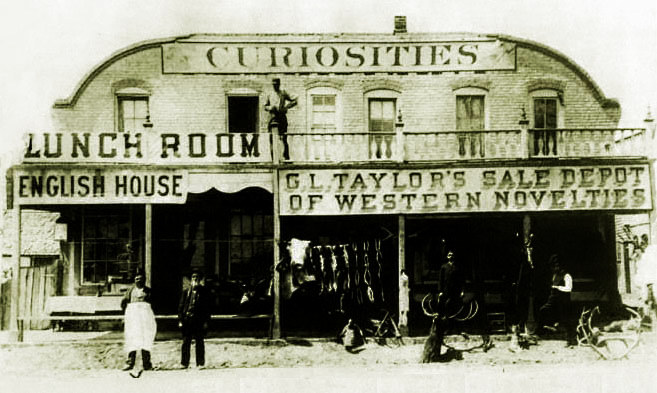
Taylor's Curiosities, approx. 1872.
Taylor's, constructed about 1872, was situtated about where the Albany Hotel Building is now located. It was razed when it became
as discussed below necessary to move the Becker Hotel southward to make room for the railroad tracks between the
Normandie Hotel and the Beckers Hotel. Taylor's
sold souveniers including examples of the "taxidermic art" and also housed the "English House" a small hotel.
Taylor advertised his establishment as having "No connection with the So-called Taylor's Free
Museum of Denver, Col." At the time, Taylor's in Denver housed, among other things, an aquarium "with fish."
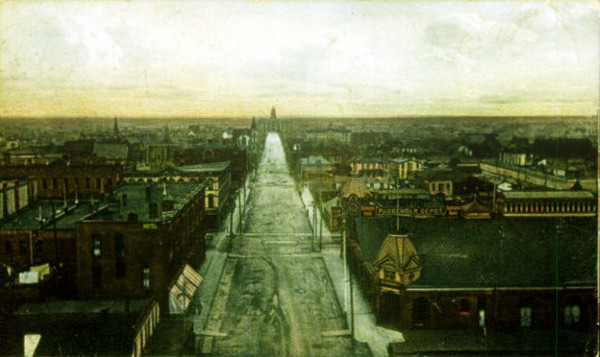
Capitol Ave, looking north, approx.
1890.
On the lower left of the above image is the roof of Taylor's. The Phoenix Block has become a
hotel. On the corner of 16th and Capitol is the Interocean Hotel. Beyond on the northwest
corner of Capitol and 17th is the Opera House. Further up the street one block south of the Capitol Building on the right is the Public School.
The area had become a public park. The park is presently occupied by
Supreme Court Building
On the right, across from the Normandie Hotel is the Burlington Station.
Across from the Railway Station on the northeast corner is Abney's livery and feed sables.The site was later occupied by the
Majestic Building.
Approximate dating of photos on this page has done by what is or is not present in the photos. Please note the alley
located between the Normandie Hotel and Taylor's and later the Hotel Becker.
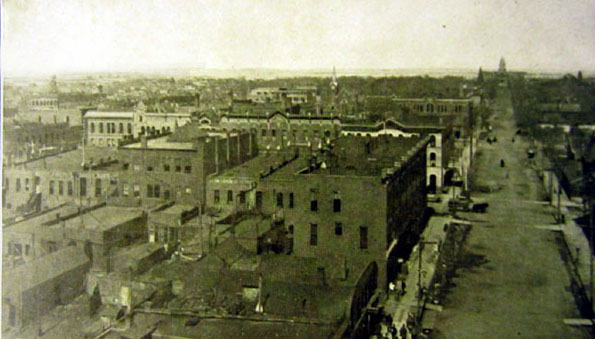
Capitol Ave, looking north, prior to 1904.
Note the back end of the Atlas Building, the third building to the left of
Capitol Ave, with the glass roof for an atrium. As indicated in the next photo, by 1905, Taylor's gave way for the construction of Henry Becker's
Hotel Becker. The Hotel Becker featured private baths and was intended to compete with the Interocean.
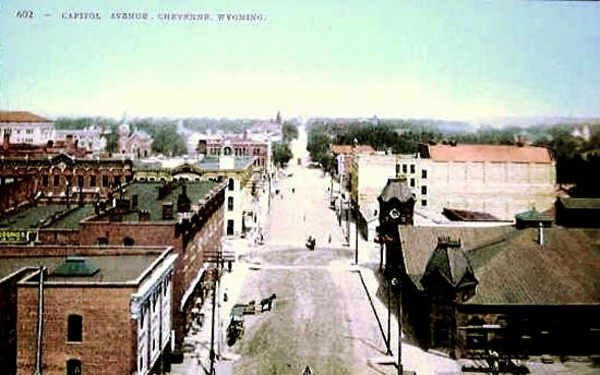
Capitol Ave, looking north, approx.
1905. Becker Hotel on left. Post Card by J. E. Stimson.
In the above image, the Majestic Building has not yet been constructed. Compare with next postcard.
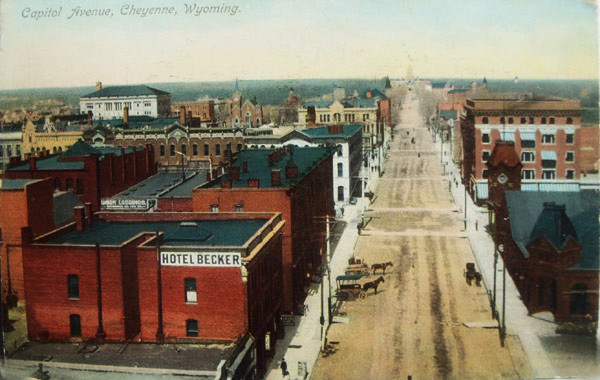
Capitol Ave, looking north, approx.
1907.
On the northeast corner of 16th and Capitol is the First National Bank Building (the Majestic Building). The Bank Building
was constructed in 1906. Beyond it is the Capitol Theatre constructed in 1904. The Capitol Theatre was at the time
the most elegant of Cheyenne's theatres. The Atlas building was extended in 1907 to house an auditorium and a fly loft viible in the
image.
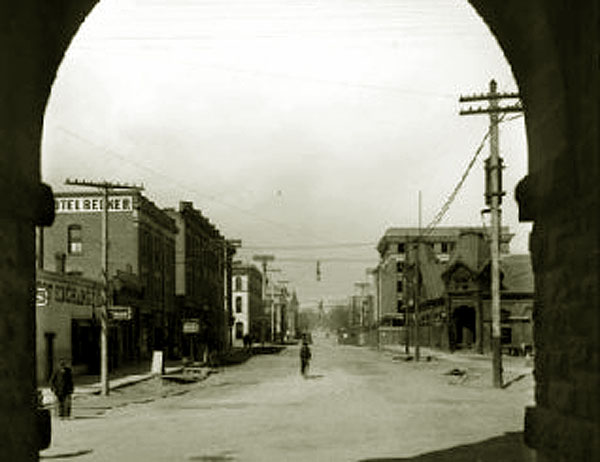
Capitol Ave, looking north through entrance portico
Of Union Pacific Station approx. 1906-08, Hotel Becker on Left.
1907.
When Henry Becker constructed his hotel on the site of Taylor's, he, no doubt, failed to anticiplate the significance of alley between his hotel and the
Normandie.
In 1890, the Union Pacific acquired the Cheyenne & Northern and the Colorado Central. With the bacnkruptcy of the UP, it was required
to divest itself over those railroads as well as the Fort Worth and Denver Railway. The Colorado and Southern Railway took over those properties. In the meantime,
the practice of driving cattle from Texas to the northern plains and been repleaced by shipping the
cattle northward. Shipping, however, in this manner ate into profits when it could not be done on
one railway. In 1908, the Colorado and Southern was acquired by the Chicago, Burlington and Quincy meaning that one
railroad had effectively put together one united rairoad from Texas to Orin Junction, Wyoming. There was, however, one fly in the ointment:
the Colorado and Southern was not connected to the CB & Q in Cheyenne even though the tracks were only a few blocks apart. This meant that the
Burlingtn would have to pay the Union Pacific for the use of its tracks for those few blocks. The solution lay in the alley. The Burlington
tracks ended on Capitol Avenue almost directly across from the entry to the alley.In July 1909 the Burlington finally arranged with the City for the use
of the alley to extend its tracks to the colorado and Southern tracks. There was an
additional difficulty. The Alley was too narrow.
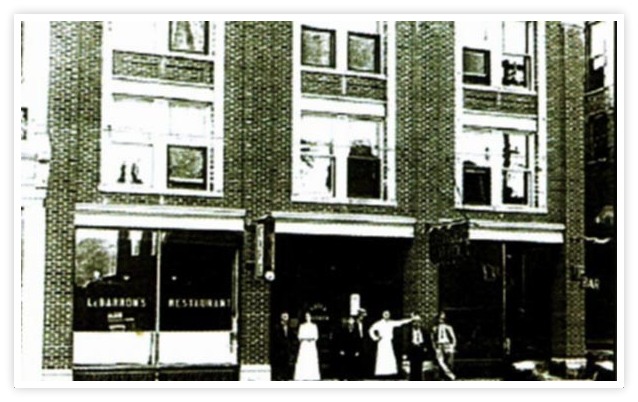
Hotel Becker, 1908.
Becker's hotel was the newest in Cheyenne and featured LeBarron's restuarant owned by William I LeBarron.
The railroad ultimately came up with a solution to its difficulty: the hotel was jacked up and moved forty-four feet southward displacing a saloon to the south.
By August 1909 the tracks were extended across Capitol and down the alley. Following the move
the hotel was renovated and re-opened as the Albany Hotel. In 1910, Henry and Charles Becker constructed a new Hotel Becker on 15th Street, one-half block north of
the Union Pacific railway station. Will LeBarron opened a new restuarant at 209 W. 17th Street. The Legislature enacted a law
which restricted the hours women could be employed while working in a restuarant except working for restuarants owned by
railroads. LeBarron was arrested for violating the law. In a decision from the Wyoming Supreme Court,
the law was held unconstitutional since it did not treat all equally. See State V. LeBarron, 162 Pac. 265 (1917). LeBarron moved to Nebraska where he
operated a ranch and later in 1930 founded radio station KGNE (now KODY, North Platte, Nebraska).
In 1966 at age 90.
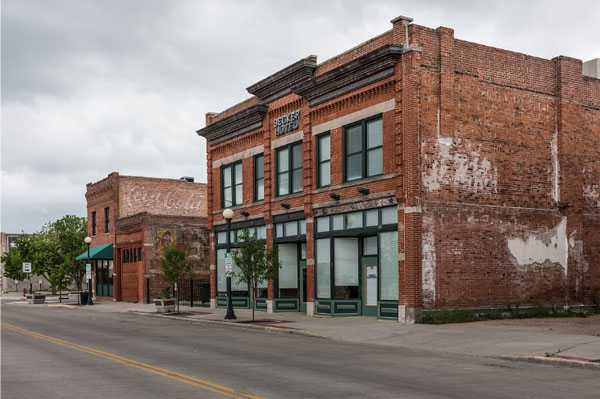
Hotel Becker, 15th Street, Cheyenne.
Photo by Carol M. Highsmith, 2015, courtesy of Library of Congress. Beyond with the "ghost" Coca-Cola sign is the Hofman
Building constructed in 1872. The "one way" sign marks the south end of Carey Ave and the former site of the Metropolitan Hotel discussed on a
prior page.
The Hofman Building at various times housed the Hofman Brothrs Saloon, a candy warehouse for Boyd's and more recently
reverted to a bar. Allegedly in its earlier days it housed "women boarders" on the second floor.
Next Page: Depot Plaza.
|